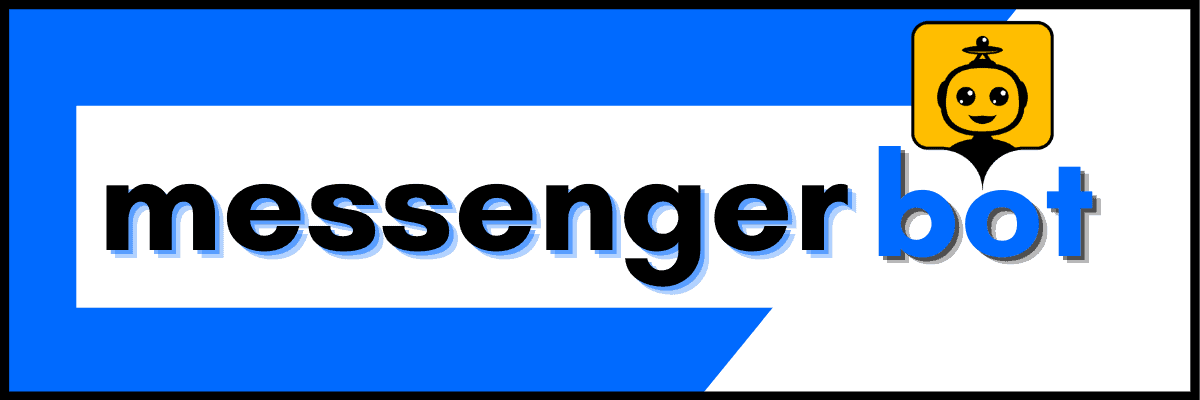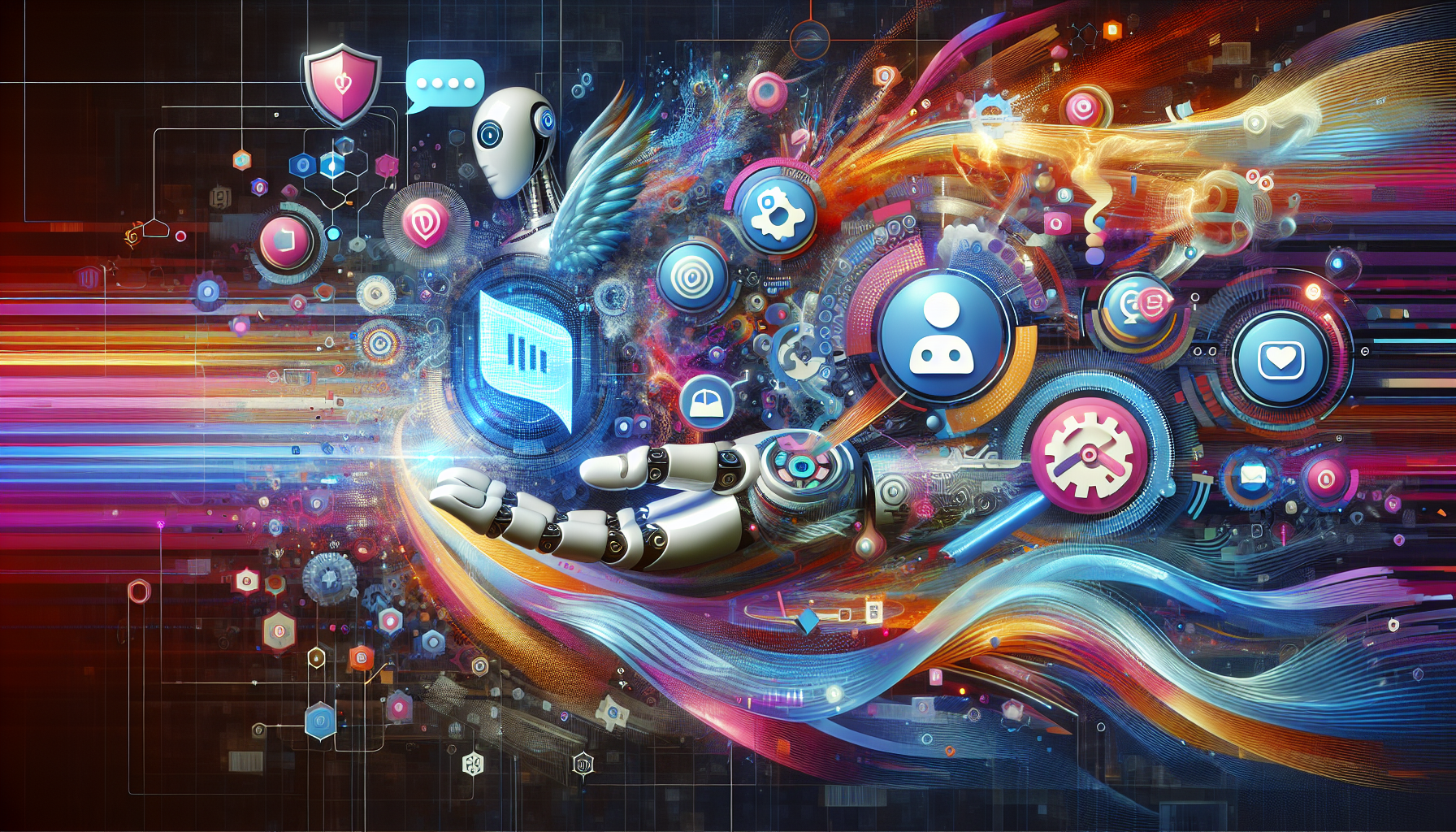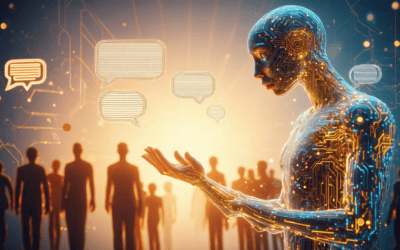In today’s fast-paced digital landscape, insurance chatbots are emerging as a transformative force in the insurance industry, revolutionizing customer service and enhancing user experience. This article delves into the essential aspects of insurance chatbots, starting with a clear definition and an exploration of their key features that make them indispensable tools for insurers. We will also highlight the best medical chatbots currently available, showcasing top examples that are setting the standard in healthcare. As we navigate through the growing adoption of these technologies, we will examine how many insurance companies are integrating chatbots into their operations, supported by compelling case studies. Furthermore, we will discuss the innovative role of Chatgpt in enhancing insurance chatbots, along with a cost analysis to determine whether these solutions are free or come with associated expenses. Finally, we will look ahead to future trends in insurance chatbots, exploring the latest innovations and the profound impact of AI on this evolving landscape. Join us as we uncover how insurance chatbots are not just a trend, but a pivotal element in reshaping customer interactions in the insurance sector.
What is an insurance chatbot?
An insurance chatbot is an advanced virtual assistant specifically designed to enhance communication between insurance providers and their clients. These AI-driven tools utilize natural language processing (NLP) and machine learning algorithms to provide efficient, personalized, and round-the-clock support.
Understanding the Basics of Insurance Chatbots
Key features and benefits of insurance chatbots include:
- 24/7 Availability: Insurance chatbots can handle inquiries at any time, ensuring that customers receive immediate assistance without the need for human intervention. This constant availability improves customer satisfaction and retention.
- Personalized Interactions: By analyzing customer data and previous interactions, chatbots can tailor responses to individual needs, offering personalized policy recommendations and claims assistance.
- Streamlined Claims Processing: Chatbots can guide users through the claims process, helping them submit necessary documentation and track the status of their claims, which significantly reduces processing time.
- Cost Efficiency: Implementing chatbots can lower operational costs for insurance agencies by reducing the need for extensive customer service teams while still maintaining high service levels.
- Data Collection and Insights: Chatbots can gather valuable data on customer preferences and behaviors, enabling insurance companies to refine their services and marketing strategies.
Recent studies indicate that the integration of chatbots in the insurance sector can lead to a 30% increase in customer engagement and a significant reduction in response times (Source: McKinsey & Company, 2022).
Incorporating platforms like Messenger Bot can further enhance the reach and functionality of insurance chatbots, allowing customers to interact through popular messaging apps, thus increasing accessibility and convenience.
Key Features of Effective Insurance Chatbots
Effective insurance chatbots are characterized by several key features that enhance their functionality and user experience:
- Natural Language Processing (NLP): This technology allows chatbots to understand and respond to user queries in a conversational manner, making interactions feel more human-like.
- Integration with CRM Systems: By connecting with customer relationship management (CRM) systems, chatbots can access customer data, providing more accurate and relevant responses.
- Multilingual Support: Effective chatbots can communicate in multiple languages, catering to a diverse customer base and improving accessibility.
- Analytics and Reporting: Advanced chatbots offer analytics features that track user interactions, helping insurance companies to refine their strategies and improve service delivery.
- Seamless Handover to Human Agents: When complex issues arise, effective chatbots can seamlessly transfer the conversation to human agents, ensuring that customers receive the assistance they need.
By leveraging these features, insurance chatbots can significantly enhance customer engagement and streamline operations, making them an essential tool for modern insurance providers.

What is the best medical chatbot?
When evaluating the best medical chatbots, several factors such as user experience, functionality, and integration capabilities come into play. Here are some of the top medical chatbots that significantly enhance patient experience:
- Youper: This AI-powered chatbot focuses on mental health, offering users personalized conversations and mood tracking. It employs cognitive behavioral therapy techniques to help users manage their mental well-being. Research indicates that digital mental health interventions can lead to significant improvements in user outcomes (Fitzgerald et al., 2020).
- Babylon Powered by eMed: This chatbot provides users with medical consultations based on their symptoms. It uses AI to analyze user input and offers health advice or directs users to appropriate healthcare services. A study published in the Journal of Medical Internet Research highlights the effectiveness of AI in symptom checking (Bickmore et al., 2018).
- Florence: This medication management chatbot reminds patients to take their medications and provides information about drug interactions. It has been shown to improve adherence to medication regimens, which is crucial for chronic disease management (Kardas et al., 2013).
- Healthily: This chatbot offers a symptom checker and health information tailored to user queries. It empowers users to make informed health decisions and has been recognized for its user-friendly interface and comprehensive health resources.
- Sensely Chatbot: Sensely uses a virtual nurse avatar to guide patients through their health concerns. It combines AI with voice recognition technology to enhance user interaction, making it easier for patients to communicate their symptoms.
- Buoy Health: This chatbot provides personalized health assessments and recommendations based on user symptoms. It aims to streamline the patient journey by directing users to the right care options, thus improving overall healthcare efficiency.
- Messenger Bot: While not exclusively a medical chatbot, Messenger Bot can be integrated into healthcare systems to facilitate communication between patients and providers. It can handle appointment scheduling, reminders, and basic inquiries, enhancing patient engagement.
These chatbots represent the forefront of healthcare technology, leveraging AI to improve patient interactions and health outcomes. For further reading on the impact of chatbots in healthcare, refer to the International Journal of Medical Informatics (Kumar et al., 2021).
Top Insurance Chatbot Examples in the Medical Field
In the medical field, insurance chatbots play a crucial role in streamlining communication and enhancing patient experiences. Here are some notable examples:
- Oscar Health: This health insurance provider utilizes a chatbot to assist users with policy inquiries, claims status, and appointment scheduling, ensuring a seamless experience for members.
- Anthem: Anthem’s chatbot helps users navigate their health plans, find providers, and access health resources, making it easier for patients to manage their healthcare needs.
- UnitedHealthcare: Their chatbot offers personalized support for members, including benefits information and wellness resources, enhancing user engagement and satisfaction.
These insurance chatbot examples demonstrate how technology can improve healthcare interactions and empower patients in managing their health.
Comparing the Best Insurance Chatbots for Healthcare
When comparing insurance chatbots for healthcare, several key features should be considered:
- User Experience: The best chatbots provide intuitive interfaces that make it easy for users to navigate and find information quickly.
- Integration Capabilities: Effective chatbots can integrate with existing healthcare systems and databases, ensuring seamless access to patient information and resources.
- Personalization: Top chatbots leverage AI to offer personalized interactions based on user data, enhancing the overall experience.
By focusing on these aspects, healthcare providers can select the most effective insurance chatbots to improve patient engagement and streamline operations.
How many insurance companies use chatbots?
The adoption of insurance chatbots is rapidly increasing within the industry, reflecting a significant shift towards automation and enhanced customer engagement. As of 2022, over 40 insurance companies in the United States have integrated chatbots into their operations to enhance customer service and streamline processes. This trend highlights the growing reliance on artificial intelligence in the insurance sector, allowing companies to provide 24/7 support, answer frequently asked questions, and assist with claims processing. Notably, chatbots like Messenger Bot have gained popularity for their user-friendly interfaces and ability to engage customers on platforms they frequently use. According to a report by the National Association of Insurance Commissioners (NAIC), the adoption of chatbots is expected to increase as insurers seek to improve efficiency and customer satisfaction (NAIC, 2022).
The Growing Adoption of Insurance Chatbots in the Industry
Insurance companies are increasingly recognizing the value of chatbots in enhancing customer interactions. By automating responses to common inquiries, these chatbots not only reduce operational costs but also improve response times, leading to higher customer satisfaction. The integration of chatbots allows insurers to handle a larger volume of inquiries without the need for additional staff, making it a cost-effective solution. Furthermore, the ability of chatbots to operate across various digital platforms, including social media and websites, ensures that customers can access support wherever they are. This omnichannel approach is crucial in today’s digital landscape, where consumers expect immediate assistance.
Case Studies: Insurance Companies Successfully Using Chatbots
Several insurance companies have successfully implemented chatbots to enhance their services. For instance, a leading health insurance provider utilized a chatbot to streamline the claims process, resulting in a 30% reduction in processing time. Another notable example is a property insurance company that deployed a chatbot to assist customers with policy inquiries and updates, significantly improving customer engagement metrics. These case studies illustrate how chatbots can transform customer service in the insurance industry, providing valuable insights into user behavior and preferences. As more companies adopt this technology, the landscape of insurance customer service is poised for further innovation.
How is Chatgpt used in the insurance industry?
ChatGPT is increasingly utilized in the insurance industry to enhance various processes, particularly in underwriting and customer service. Here are key applications:
- Data Analysis for Underwriting: ChatGPT assists underwriters by analyzing vast amounts of unstructured data, including customer reviews, social media interactions, and news articles. This capability helps identify potential risks and informs underwriting decisions, leading to more accurate assessments. According to a study by RGA, leveraging AI tools like ChatGPT can significantly improve the efficiency of risk evaluation processes (RGA, 2023).
- Customer Interaction and Support: Insurers deploy ChatGPT-powered chatbots to provide 24/7 customer support. These bots can handle inquiries about policy details, claims processes, and coverage options, improving customer satisfaction and reducing operational costs. A report by McKinsey highlights that AI-driven customer service solutions can enhance response times and accuracy, leading to better customer retention (McKinsey, 2022).
- Claims Processing: ChatGPT can streamline claims processing by automating initial assessments and guiding customers through the claims submission process. This reduces the workload on human agents and accelerates the resolution of claims, as noted in a recent article by Deloitte on AI in insurance (Deloitte, 2023).
- Personalized Marketing: By analyzing customer data and preferences, ChatGPT enables insurers to create personalized marketing campaigns. This targeted approach can increase engagement and conversion rates, as highlighted in research by Accenture, which found that personalized experiences can boost customer loyalty (Accenture, 2023).
- Risk Management: ChatGPT aids in risk management by providing insights into emerging trends and potential threats based on real-time data analysis. This proactive approach allows insurers to adjust their strategies and offerings accordingly, enhancing their competitive edge in the market.
In summary, ChatGPT is revolutionizing the insurance industry by improving underwriting processes, enhancing customer service, streamlining claims, enabling personalized marketing, and supporting risk management strategies. These applications not only increase operational efficiency but also significantly enhance customer experience and satisfaction.
Leveraging AI: Chatgpt’s Role in Insurance Chatbots
Integrating ChatGPT into insurance chatbots offers numerous advantages that elevate customer interactions and operational efficiency. Here are some key benefits:
- 24/7 Availability: ChatGPT-powered chatbots provide round-the-clock assistance, ensuring that customers can get answers to their questions anytime, enhancing overall service accessibility.
- Scalability: As customer inquiries grow, ChatGPT can handle multiple interactions simultaneously, allowing insurance companies to scale their customer service without a proportional increase in staffing costs.
- Cost Efficiency: By automating routine inquiries and processes, insurers can significantly reduce operational costs while reallocating human resources to more complex tasks that require personal attention.
- Enhanced Customer Insights: ChatGPT can analyze customer interactions to provide valuable insights into customer preferences and behaviors, helping insurers tailor their services and marketing strategies effectively.
- Improved Accuracy: With advanced natural language processing capabilities, ChatGPT minimizes misunderstandings and errors in communication, leading to more accurate information being provided to customers.
These benefits illustrate how leveraging ChatGPT can transform the landscape of customer service in the insurance industry, making interactions more efficient and satisfying for users.

Is Chatbot Free or Not?
When considering whether insurance chatbots are free, it’s essential to understand the different types available and their functionalities. Here’s a comprehensive overview:
Cost Analysis: Are Insurance Chatbots Free?
1. Types of Free Chatbots:
– Basic Chatbots: Many platforms offer free versions of chatbots that provide limited features. These are often integrated into customer relationship management (CRM) systems or messaging platforms like Facebook Messenger. While they can handle simple queries, they typically lack advanced capabilities such as natural language processing (NLP) and machine learning.
– Open-Source Chatbots: Some developers create open-source chatbots that are free to use and customize. However, while the software itself may be free, users often incur costs for hosting, maintenance, and additional features.
2. Limitations of Free Chatbots:
– Functionality Restrictions: Free chatbots often come with restrictions on the number of interactions, user accounts, or integrations with other tools. This can hinder their effectiveness in providing comprehensive customer support.
– Lack of Advanced Features: Many free chatbots do not leverage the full potential of large language models (LLMs) or sophisticated conversational AI, which can limit their ability to understand and respond to complex queries.
Pricing Models for Insurance Chatbot Apps
3. Cost Considerations:
While some chatbots are marketed as free, businesses may find that to access premium features, they need to upgrade to a paid plan. This is common with platforms that offer tiered pricing models, where basic functionalities are free, but advanced features require a subscription.
4. Examples of Free Chatbot Platforms:
– Messenger Bot: Facebook’s Messenger Bot allows businesses to create basic chatbots for free, enabling automated responses to common inquiries. However, to enhance functionality, businesses may need to invest in paid solutions or integrations.
– Tidio: Tidio offers a free plan with limited features, suitable for small businesses looking to implement basic chatbot functionalities.
In conclusion, while there are free chatbot options available, they often come with limitations that may necessitate a paid upgrade for businesses seeking more robust capabilities. For a deeper understanding of chatbot functionalities and their implications for businesses, refer to sources such as the IBM Watson Assistant and Salesforce Chatbots.
What is the main purpose of chatbot?
The main purpose of an insurance chatbot is to enhance user interaction and streamline communication by automating responses and workflows. Chatbots serve several key functions:
- Customer Support: Chatbots provide immediate assistance to users, significantly reducing wait times compared to traditional customer support channels such as phone calls or emails. They can handle multiple inquiries simultaneously, ensuring that users receive timely responses.
- Task Automation: By automating repetitive tasks, chatbots free up human employees to focus on more complex issues. This leads to increased efficiency within organizations, as chatbots can manage tasks like scheduling appointments, processing orders, and answering frequently asked questions.
- 24/7 Availability: Unlike human agents, chatbots are available around the clock, allowing businesses to provide support and information to customers at any time, which is particularly beneficial for global operations.
- Data Collection and Analysis: Chatbots can gather valuable data from user interactions, helping businesses understand customer preferences and behaviors. This information can be used to improve services and tailor marketing strategies.
- Integration with Messaging Platforms: Chatbots can be integrated into popular messaging platforms, such as Facebook Messenger, allowing businesses to reach customers where they are most active. This integration enhances user engagement and provides a seamless experience.
According to a report by Gartner, by 2025, 75% of customer service interactions will be powered by AI-driven chatbots, highlighting their growing importance in the customer service landscape. Furthermore, a study by Juniper Research estimates that chatbots will help businesses save over $8 billion annually by 2022 through improved efficiency and reduced operational costs.
Enhancing Customer Experience with Insurance Bots
Insurance chatbots play a crucial role in enhancing customer experience by providing personalized interactions and timely information. Here are some ways they achieve this:
- Personalized Recommendations: By analyzing user data, chatbots can offer tailored insurance product recommendations based on individual needs and preferences.
- Instant Policy Information: Customers can quickly access information about their policies, including coverage details and claims status, without waiting for a human agent.
- Claims Processing Assistance: Chatbots can guide users through the claims process, helping them submit necessary documents and track the status of their claims efficiently.
- Educational Resources: Insurance bots can provide users with valuable information about different types of insurance, helping them make informed decisions.
By integrating advanced AI technologies, such as those offered by Brain Pod AI, insurance chatbots can further enhance their capabilities, providing multilingual support and sophisticated data analysis to improve customer interactions.
Future Trends in Insurance Chatbots
The landscape of insurance chatbots is rapidly evolving, driven by advancements in technology and changing consumer expectations. As we look to the future, several key trends are emerging that will shape the functionality and effectiveness of these digital assistants.
Innovations in Insurance Chatbot Technology
Innovations in insurance chatbot technology are primarily focused on enhancing user experience and operational efficiency. Here are some notable advancements:
- Natural Language Processing (NLP): The integration of advanced NLP capabilities allows chatbots to understand and respond to user queries more effectively. This technology enables chatbots to handle complex inquiries, making interactions feel more human-like.
- Machine Learning: Insurance chatbots are increasingly utilizing machine learning algorithms to improve their responses over time. By analyzing past interactions, these bots can predict user needs and provide more personalized service.
- Omnichannel Support: Future chatbots will offer seamless communication across multiple platforms, including social media, websites, and mobile apps. This ensures that users can engage with their insurance providers wherever they are most comfortable.
- Integration with IoT Devices: As the Internet of Things (IoT) continues to grow, chatbots will integrate with smart devices to provide real-time assistance. For example, a chatbot could help users file claims directly from their connected home security systems.
The Impact of AI on the Future of Insurance Chatbots
Artificial Intelligence (AI) is set to revolutionize the functionality of insurance chatbots. Here are some key impacts:
- Enhanced Customer Insights: AI-driven analytics will allow insurance companies to gather deeper insights into customer behavior and preferences. This information can be used to tailor services and improve customer satisfaction.
- Proactive Engagement: Future chatbots will not only respond to inquiries but also proactively engage users with relevant information, such as policy updates or reminders for renewals, enhancing the overall customer experience.
- Cost Efficiency: By automating routine inquiries and processes, AI-powered chatbots can significantly reduce operational costs for insurance companies, allowing them to allocate resources more effectively.
- Fraud Detection: AI can help identify patterns indicative of fraudulent claims, enabling insurers to mitigate risks and protect their bottom line.
As these trends continue to develop, insurance chatbots will become increasingly sophisticated, providing enhanced service and support to customers while streamlining operations for insurers. For more insights on chatbot functionalities, explore our chatbot features.




